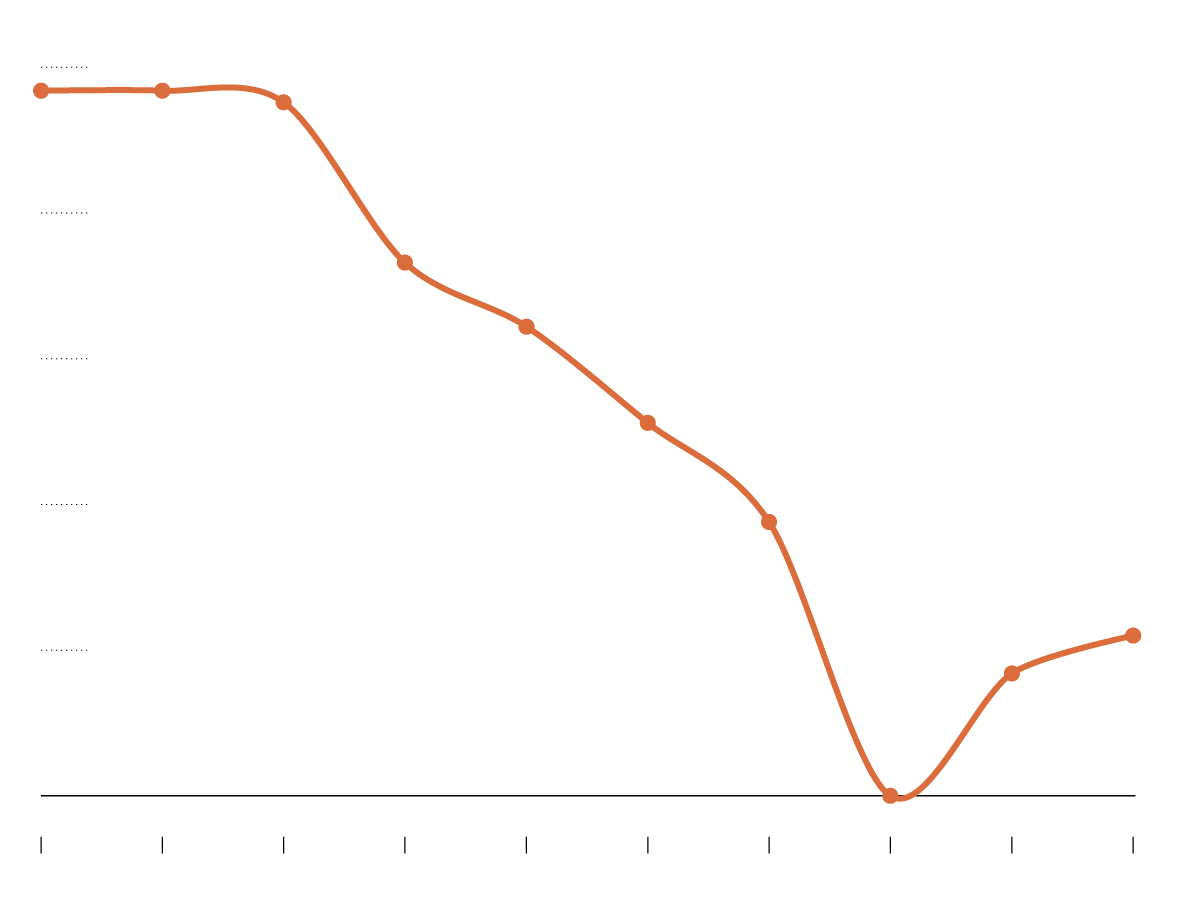
+25% difference from 2016 levels
After years of national decline …
fine particulate pollution (PM2.5) started to increase after 2016.
+25% difference from 2016 levels
After years of national decline …
fine particulate pollution (PM2.5) started to increase after 2016.
+25% difference from 2016 levels
After years of national decline …
PM2.5 pollution started to increase in 2016.
+25% difference from 2016 levels
After years of national decline …
fine particulate pollution (PM2.5) started to increase after 2016.
+25% difference from 2016 levels
After years of national decline …
PM2.5 pollution started to increase in 2016.
Source: National Bureau of Economic Research
New data reveals that damaging air pollution has increased nationally since 2016, reversing a decades-long trend toward cleaner air.
An analysis of Environmental Protection Agency data published this week by researchers at Carnegie Mellon University found that fine particulate pollution increased 5.5 percent on average across the country between 2016 and 2018, after decreasing nearly 25 percent over the previous seven years.
“After a decade or so of reductions,” said Nick Muller, a professor of economics, engineering and public policy at Carnegie Mellon, and one of the study’s co-authors, “this increase is a real about-face.”
The research identified recent increases in driving and the burning of natural gas as likely contributors to the uptick in unhealthy air, even as coal use and related pollution have declined. In the West, wildfires contributed to the rise in particulate matter.
+30 % difference from 2016 levels
Fine particulate pollution (PM2.5)
+30 % difference from 2016 levels
+30 % difference from 2016 levels
Fine particulate pollution (PM2.5)
+30 % difference from 2016 levels
+30 % difference from 2016 levels
Fine particulate pollution (PM2.5)
+30 % difference from 2016 levels
+30 % difference from 2016 levels
Fine particulate pollution (PM2.5)
+30 % difference from 2016 levels
Source: National Bureau of Economic Research
Researchers also suggested that a decrease in enforcement of the Clean Air Act may have contributed to the recent rise in pollution. That law and its subsequent updates put in place strict air pollution standards for power plants, factories, vehicles and other sources, and has been credited with dramatically improving air quality across the country and saving hundreds of thousands of lives.
The new analysis estimated that the increase of slightly more than 5 percent in fine particulate pollution nationwide between 2016 and 2018 was associated with nearly 10,000 additional premature deaths during that time.
Fine particulate pollution – known as PM2.5 because the particles are less than 2.5 micrometers in diameter, or one-thirtieth the size of a human hair – has been linked to a range of health problems including asthma and respiratory inflammation, lung cancer, heart attack and stroke. A recent study found a significant link between air pollution and the risk of miscarriage.